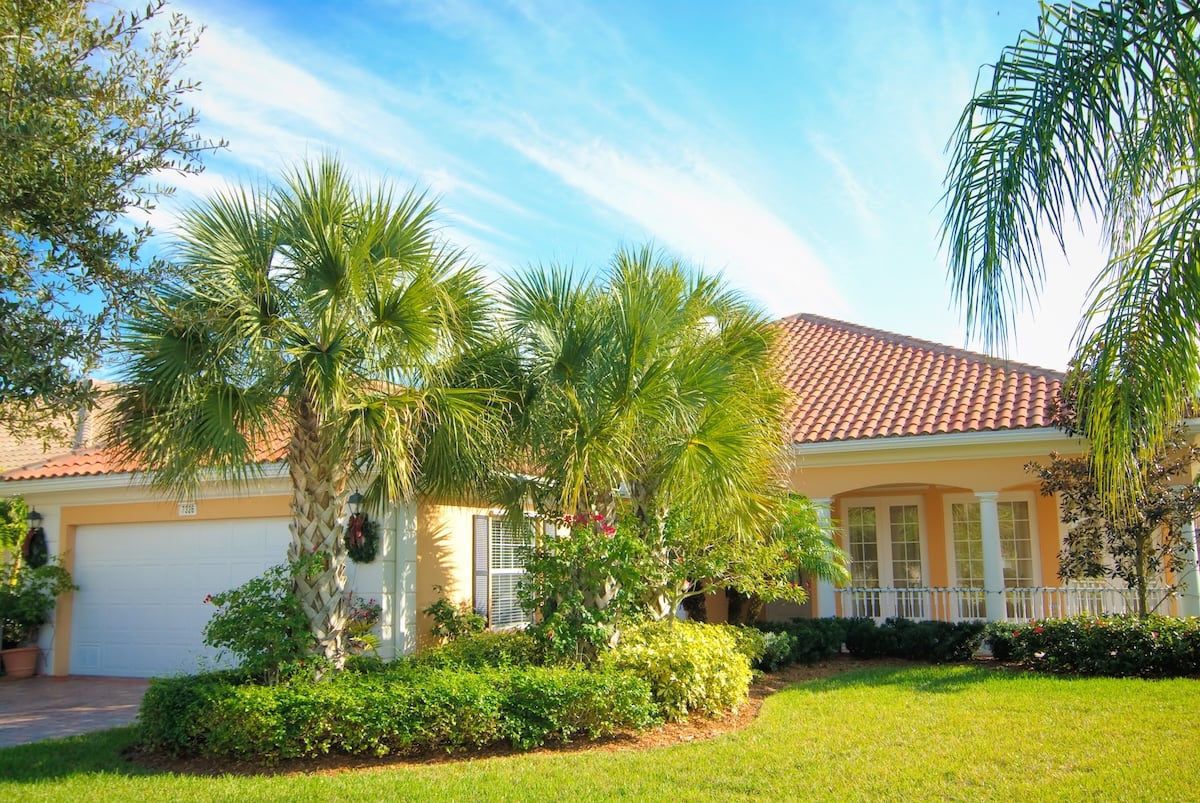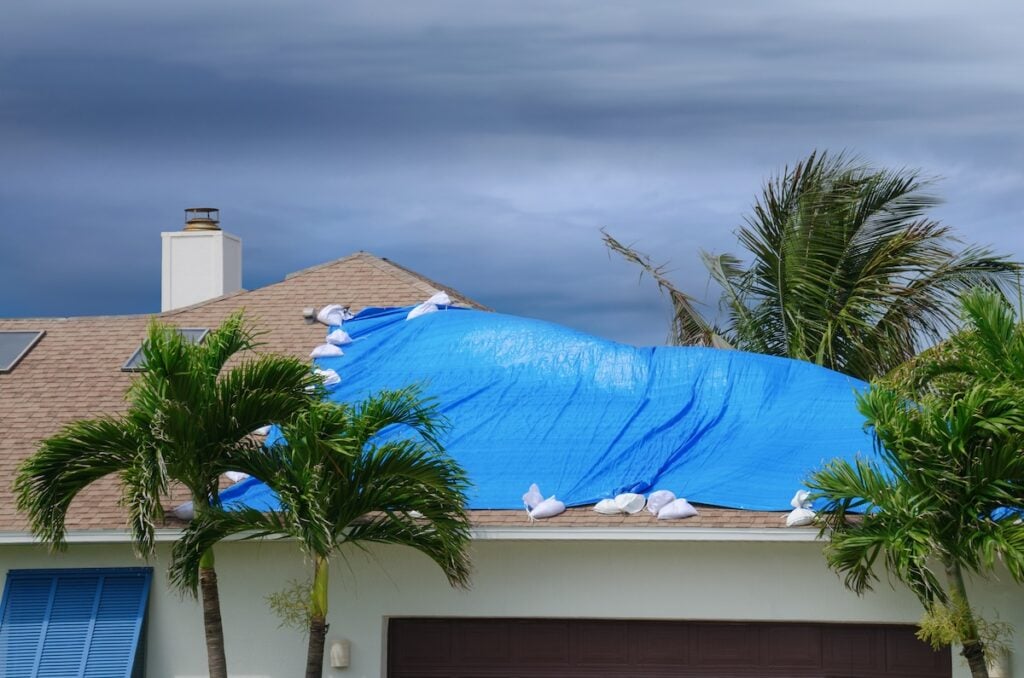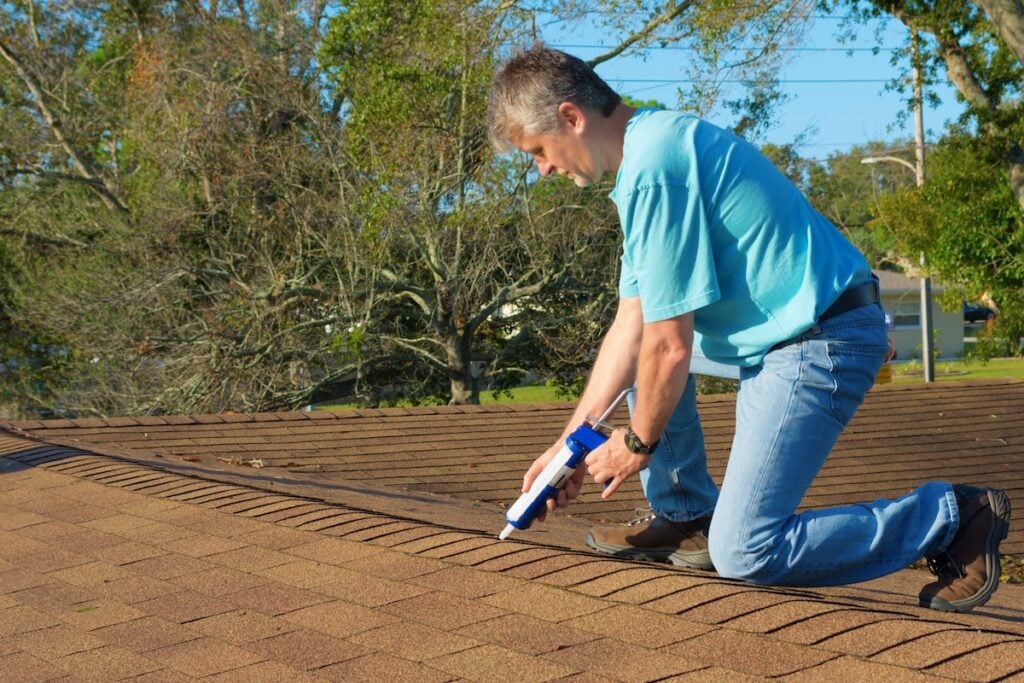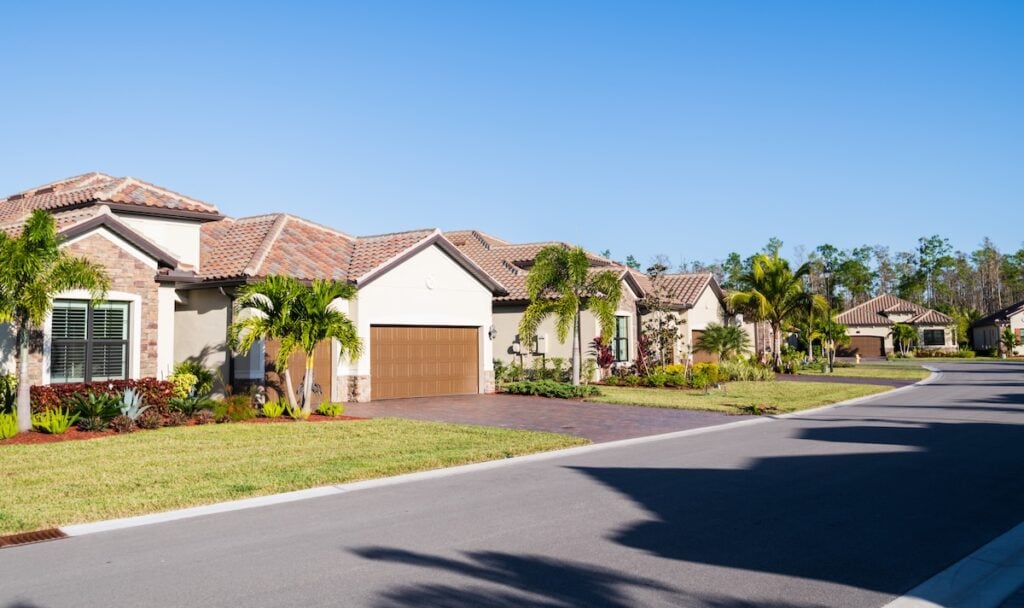

Are There Hurricane-Proof Roofs? Prep Your Roof For Intense Winds
Posted July 24th, 2025 | 8 min. Read
Hurricane season brings anxiety for many homeowners, especially those living in coastal areas where powerful storms can cause devastating damage. While no roof is completely “hurricane proof,” modern roofing materials and installation techniques can significantly improve your home’s ability to withstand intense winds and flying debris. Understanding your options and taking proactive steps can make the difference between minor repairs and major reconstruction.
This comprehensive guide will explore the reality of hurricane-resistant roofing, examine the best materials and techniques available, and provide actionable steps to prepare your existing roof for storm season. We’ll cover:
- The truth about a hurricane-proof roof and what “wind-resistant” really means
- Step-by-step preparation strategies for your current roof
- When to call professionals for hurricane readiness assessments
👉 Understanding Hurricane Roof Resistance

The term “hurricane-proof roof” can be misleading. No roofing system can guarantee complete protection against Category 5 hurricanes with winds exceeding 157 mph. However, hurricane-resistant roofing systems are designed to withstand specific wind speeds and debris impact based on building codes and industry standards.
Hurricane resistance is measured by several factors. Wind uplift resistance determines how well your roof can handle the upward force of wind trying to lift shingles or panels off your home. Impact resistance measures how well materials can withstand flying debris like tree branches, roof tiles, or other storm-generated projectiles. Water penetration resistance ensures your roof can keep moisture out even when wind-driven rain hits at unusual angles.
Building codes in hurricane-prone areas require roofs to meet specific standards. In Florida, for example, the building code requires roofs to withstand winds of at least 140 mph in most coastal areas. Some regions require even higher ratings, up to 180 mph for certain structures.
Best Hurricane-Resistant Roofing Materials
Different roofing materials offer varying levels of hurricane protection. Understanding their strengths and limitations helps you make informed decisions about your home’s protection.
- Metal Roofing Systems: Metal roofs, especially standing seam designs, offer excellent hurricane resistance, with wind ratings up to 140 mph or higher. Their interlocking panels reduce wind uplift and maintain water-tight integrity, even after impacts from debris. Proper installation, including adequate fasteners and attention to edges, is crucial for performance.
- Concrete and Clay Tiles: These tiles resist wind uplift due to their heavy weight and curved shape, with modern installation methods using hurricane clips or foam adhesives for added security. They are highly impact-resistant and can be replaced individually if damaged, though proper fastening and special attention to ridge and hip areas are essential.
- Asphalt Shingles: Architectural and impact-resistant shingles perform better in hurricanes compared to standard three-tab shingles. Reinforced designs and Class 4 impact ratings make them durable against debris. Proper installation, including six-nail patterns and sealed edges, is key for ensuring wind resistance.
✅ 8 Steps to Prep Your Roof for Intense Winds

Taking proactive steps before hurricane season can significantly improve your roof’s performance and reduce storm damage. Here’s a systematic approach to hurricane roof preparation:
1. Schedule a Professional Roof Inspection
A qualified roofing professional can identify potential weaknesses before they become major problems. The inspection should cover all roofing materials, flashings, gutters, and structural connections. Look for loose or missing fasteners, cracked or damaged materials, and areas where previous repairs may have compromised wind resistance.
Professional inspectors understand the specific vulnerabilities of different roofing systems. They can identify installation defects that might not be obvious to homeowners but could lead to catastrophic failure during storms.
2. Replace Damaged or Missing Shingles
Even small areas of missing or damaged shingles can create entry points for wind uplift. Wind can get underneath damaged shingles and progressively lift larger sections of roofing. Replace any loose, cracked, or missing shingles using proper installation techniques for your area’s wind zone.
Pay special attention to shingles along roof edges, where wind uplift forces are typically strongest. These areas may require additional fasteners or enhanced installation techniques to meet hurricane resistance standards.
3. Secure Loose Flashing and Trim
Flashing around chimneys, vents, and roof intersections must be properly secured and sealed. Loose flashing can catch wind and create uplift forces that compromise larger roof areas. Check that all flashing is adequately fastened and that sealants remain flexible and watertight.
Fascia boards, soffits, and other trim elements should be securely fastened to prevent wind-driven removal. Loose trim can become dangerous projectiles while also exposing roof edges to increased wind pressure.
4. Clean and Secure Gutters
Clogged gutters can hold water that adds weight stress to roof edges and creates ice dam conditions in northern climates. Clean all gutters and downspouts, ensuring proper drainage. Check that gutters are securely fastened to the roof structure and that hangers are properly spaced.
Consider installing gutter guards to prevent debris accumulation during storms. Properly functioning gutters help manage the increased water flow from hurricane rainfall and reduce the risk of water backing up under roofing materials.
5. Trim Overhanging Tree Branches
Trees near your home pose significant threats during hurricanes. Branches can impact your roof directly or become projectiles that damage roofing materials. Trim any branches that hang over your roof or come within 10 feet of your home.
Focus on dead or diseased branches that are more likely to break during storms. Consider hiring certified arborists for large trees or complex trimming jobs, as improper tree work can create additional hazards.
6. Inspect and Reinforce Roof Deck Attachment
The roof deck attachment to your home’s structure is critical for hurricane resistance. While this inspection typically requires professional expertise, you can look for signs of inadequate attachment, like sagging roof lines or visible separation between roof elements.
Homes built before modern building codes may have inadequate roof-to-wall connections. Professional structural assessments can determine if upgrades are needed to meet current hurricane resistance standards.
7. Check Attic Ventilation
Proper attic ventilation helps equalize pressure during storms and reduces the risk of roof uplift. Ensure that soffit vents are clear of debris and that ridge or other exhaust vents are functioning properly. Balanced ventilation systems perform better in high winds than unbalanced ones.
Consider the vulnerability of different vent types to wind-driven rain. Some vent designs perform better in hurricane conditions than others, and upgrades may be worthwhile in high-risk areas.
8. Document Your Roof’s Condition
Take detailed photographs of your roof from multiple angles before hurricane season. This documentation can be valuable for insurance claims if storm damage occurs. Include close-up shots of any existing damage or recent repairs.
Keep maintenance records and receipts for roofing work, as these demonstrate proper care and may be relevant for insurance coverage. Regular maintenance documentation can also help identify recurring problems that might indicate larger issues.
👨🔧 Professional Installation Techniques for Wind Resistance

Even the best materials won’t perform properly without correct installation. Professional roofers use specific techniques to maximize hurricane resistance in high-wind areas.
Enhanced Fastening Patterns
Standard roofing installations may not provide adequate holding power for hurricane conditions. Enhanced fastening schedules require additional nails or screws placed at specific intervals and locations. For asphalt shingles, this typically means six nails per shingle instead of four, with nails placed in the optimal zone for maximum holding power.
Metal roofing requires fasteners rated for high wind loads, typically with larger heads and specialized threads. Fastener spacing becomes more critical, with reduced spacing required along edges and field areas. Structural engineers often specify exact fastening patterns for high-wind installations.
Proper Underlayment Installation
Quality underlayment serves as your roof’s second line of defense. In hurricane-prone areas, upgraded underlayment systems provide better water protection and wind resistance. Self-adhering membranes create a watertight seal around nail penetrations, while high-temperature underlayments resist tearing from wind stress.
Installation techniques for underlayment include proper overlap patterns, adequate fastening, and special attention to penetrations and transitions. Some high-wind applications require fully adhered underlayment systems that eliminate any chance of wind uplift.
Critical Connection Points
The connection between your roof and walls represents the most vulnerable area for wind damage. Professional installation includes hurricane straps or clips that physically connect roof trusses to wall framing. These connections must meet or exceed local building code requirements.
Ridge and hip connections require special reinforcement in hurricane areas. Additional fasteners, structural adhesives, and reinforced materials help these high-stress areas resist wind uplift. Professional installers understand the specific requirements for each roof configuration and local wind conditions.
🏠 Your Trusted Partner for Hurricane-Ready Roofing
When it comes to protecting your home during hurricane season, you need a team you can trust. At Certified Roofing Solutions, we combine years of experience, top-quality materials, and industry-leading expertise to ensure your roof is ready to face Florida’s toughest storms. Our commitment to excellence and personalized service has made us the go-to choice for homeowners looking for durable, hurricane-resistant roofing systems.
Don’t leave your home’s safety to chance—contact Certified Roofing Solutions today for your free roof assessment and let us help you safeguard your family and investment before the next storm.

